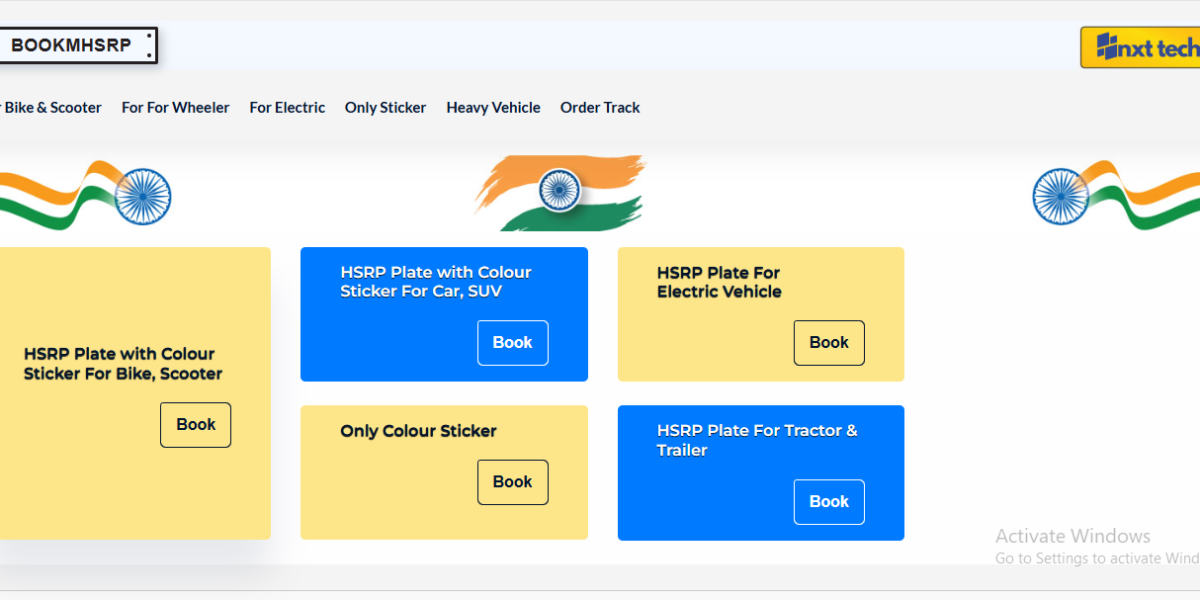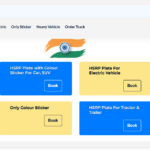The High Security Registration Plate (HSRP) is a crucial part of India’s efforts to curb vehicle-related crimes and improve road safety. Introduced by the Ministry of Road Transport and Highways (MoRTH), this system was designed to bring a standardized, secure, and tamper-proof license plate to all vehicles across the country. The HSRP system helps law enforcement agencies quickly track vehicles and reduces the chances of theft Book hsrp , impersonation, and illegal activities. This article aims to guide you through the process of booking an HSRP in India, its importance, benefits, and the details you need to know before making your booking.
What is HSRP (High Security Registration Plate)?
An HSRP is a special kind of registration plate that features advanced security features, making it difficult to forge or tamper with. The key characteristics of an HSRP include:
-
Non-removable, Non-reusable stickers: These plates come with a permanent sticker that cannot be removed or reused. This sticker contains the vehicle’s unique details.
-
Hot Stamping: The plate is created with a high-temperature stamping process that adds to its security and longevity.
-
Laser Inscribed Details: Each plate has a laser-etched code that links to the vehicle’s unique identification details stored in a centralized database. This makes it easier to track stolen vehicles.
-
Reflective Sheeting: The plate is made of reflective material, making it more visible during the night or in low-light conditions.
HSRPs are mandatory for all vehicles, including two-wheelers, three-wheelers, and four-wheelers, that were registered after 2019. Additionally, existing vehicles are required to affix HSRPs within a certain timeframe as per regional government regulations.
Why is HSRP Important?
The introduction of HSRP plays a crucial role in improving road safety and enforcing traffic laws. Here are some key reasons why it is important:
1. Security and Theft Prevention
One of the most significant benefits of HSRPs is their ability to prevent vehicle theft. The laser-etched details on the plate are linked to a unique database, making it much harder for thieves to reuse or forge the plate. The tamper-proof nature of the plate ensures that criminals cannot easily alter vehicle details.
2. Improved Road Safety
Since the HSRP is reflective and more visible, it contributes to better road safety by making vehicles easier to identify in low-visibility conditions. The visibility and readability of license plates at night make it easier for law enforcement agencies to track down violators of traffic rules.
3. Streamlined Identification
The high-security plates help law enforcement agencies identify vehicles faster. This streamlined process aids in crime prevention and ensures that vehicles are easily traceable for verification purposes.
4. Compliance with Government Regulations
Under the Motor Vehicles Act, 1988, and the directives of MoRTH, the HSRP system ensures that all vehicles adhere to a uniform system. This helps authorities maintain an organized and efficient vehicle registration system.
5. Environmental Safety
HSRPs are made from eco-friendly materials, ensuring that they are not only safe but also sustainable.
How to Book HSRP for Your Vehicle?
Booking an HSRP for your vehicle is a simple process that can be done either online or offline, depending on the region’s provisions. Here’s a step-by-step guide on how to go about it.
Step 1: Gather Vehicle Information
Before booking an HSRP, ensure that you have the following details and documents:
-
Vehicle Registration Number: This is the primary detail you will need to book the plate.
-
Vehicle Owner Details: Your name, address, and contact information are essential for the registration process.
-
Vehicle Registration Certificate (RC): This document confirms that the vehicle is legally registered with the Regional Transport Office (RTO).
-
Chassis Number and Engine Number: These are specific details found on your vehicle and are required for HSRP registration.
-
Proof of Identity and Address: A government-issued ID (Aadhar card, Passport, etc.) and a utility bill (electricity, water, etc.) may be needed for verification.
Step 2: Visit the HSRP Official Portal
Most states in India have a dedicated website for booking HSRP plates. The official website varies based on the state you reside in. For example, in Delhi, you can visit the Delhi Transport Department’s website, while in Maharashtra, it’s the HSRP Maharashtra portal.
Step 3: Fill in Vehicle Details
Once you’re on the official portal, you will need to fill in your vehicle’s details. Ensure that the information matches the details mentioned in your Vehicle Registration Certificate. Some portals will also ask for the following:
-
Chassis Number and Engine Number: These numbers are usually mentioned on the RC and the vehicle’s chassis.
-
Email Address and Phone Number: These details are used for confirmation and booking updates.
Step 4: Choose the Type of Plate
HSRPs are available in different formats based on your vehicle type:
-
For Two-Wheelers: These plates are smaller and may feature only the necessary details for identification.
-
For Four-Wheelers: These plates are larger and can include additional details like vehicle color, engine capacity, and more.
Step 5: Payment
After entering your details, you will be prompted to make the payment for the HSRP. The cost of the plate can vary depending on the vehicle type, state regulations, and the service provider. Ensure that you confirm the payment details before proceeding with the transaction. Payments are usually accepted via credit cards, debit cards, or net banking.
Step 6: Schedule an Appointment for Plate Installation
Once the payment is processed, you will be asked to schedule an appointment for installing the HSRP. Depending on the region, you can choose to have the plate installed at the RTO or a third-party authorized service provider. Ensure that you arrive at the appointment location with all the necessary documents for verification.
Step 7: Plate Installation and Verification
On the scheduled date, the authorized person will install the HSRP on your vehicle. The installation usually takes a few minutes. The plate will be affixed with a hologram sticker and laser-etched unique details that are linked to your vehicle’s registration number.
Once the installation is complete, the authorities will verify the details on the plate to ensure everything matches. After the verification process is done, you’ll receive an acknowledgment of installation.
Step 8: Receive Confirmation
Finally, you will receive confirmation via email or SMS, along with a receipt of the HSRP installation. It’s essential to keep this confirmation for future reference in case you need to make any changes or updates.
What Happens If You Don’t Book an HSRP?
Failure to book an HSRP may lead to fines and legal consequences. Vehicle owners who do not comply with the HSRP mandate may face penalties imposed by the authorities. Moreover, driving a vehicle with an outdated or non-standard plate can be a violation of road safety laws, leading to issues with traffic enforcement.
Conclusion
The introduction of High Security Registration Plates (HSRP) in India is an important step toward enhancing vehicle safety, improving road safety, and preventing vehicle-related crimes. Booking an HSRP for your vehicle is a straightforward process that can be completed online or offline, depending on your region’s specific guidelines. By following the simple steps outlined above, you can easily book and install the HSRP on your vehicle, ensuring compliance with government regulations and contributing to a safer road environment. Always ensure that you complete the process in a timely manner to avoid penalties and enjoy the security benefits that HSRPs offer.












